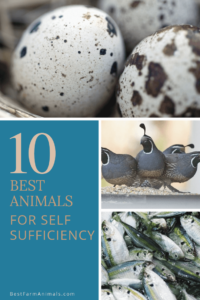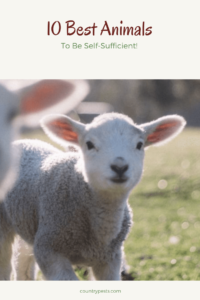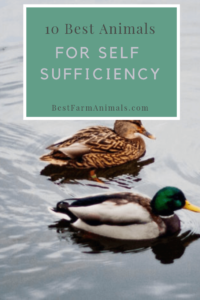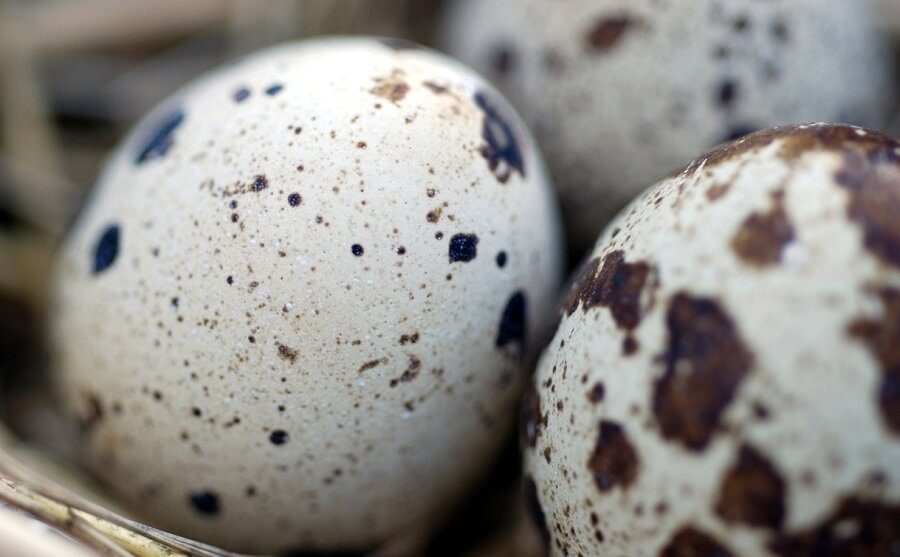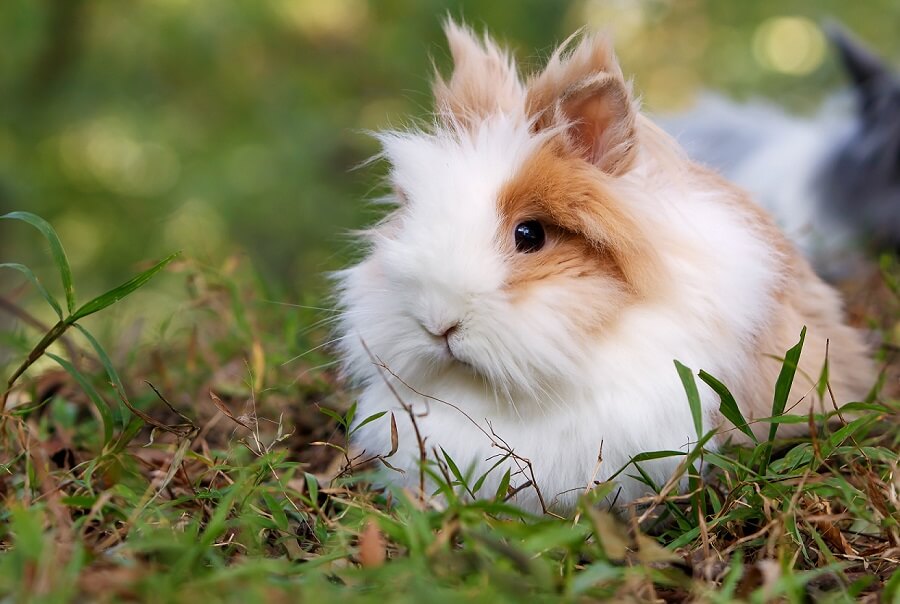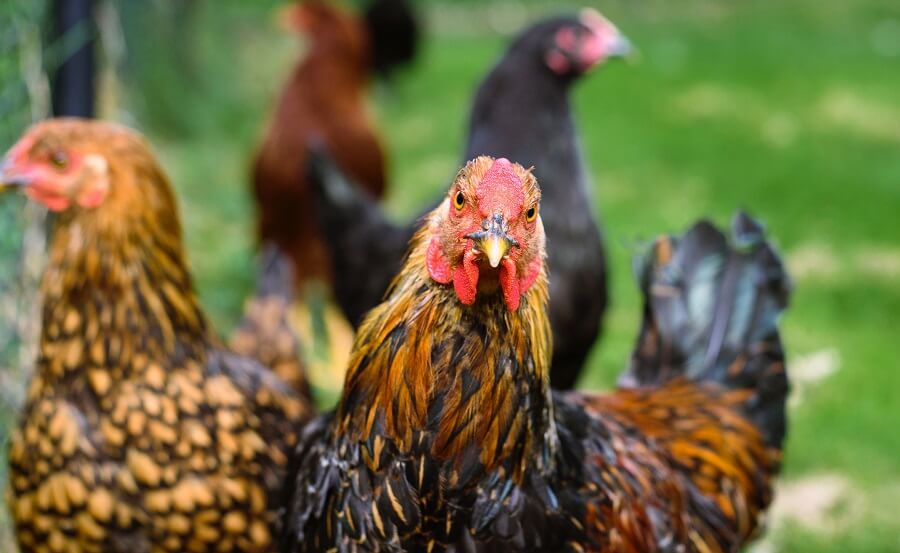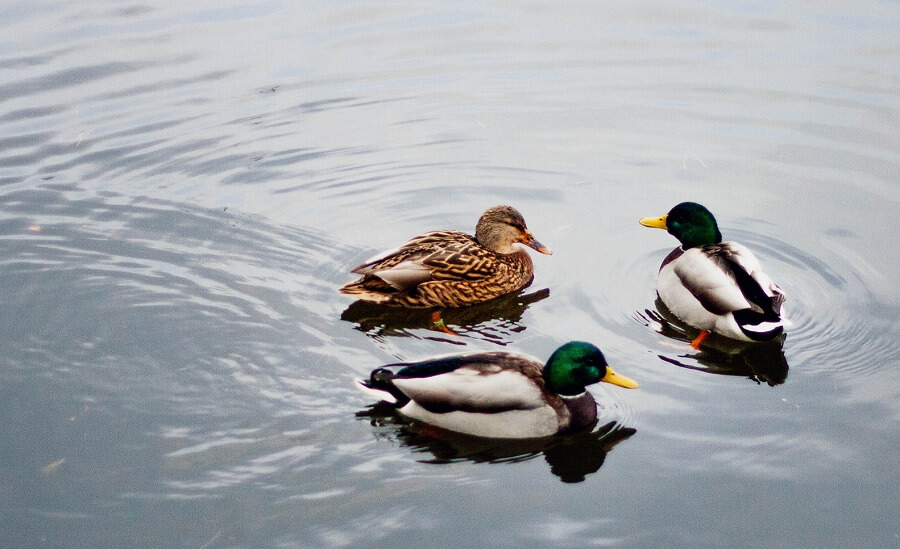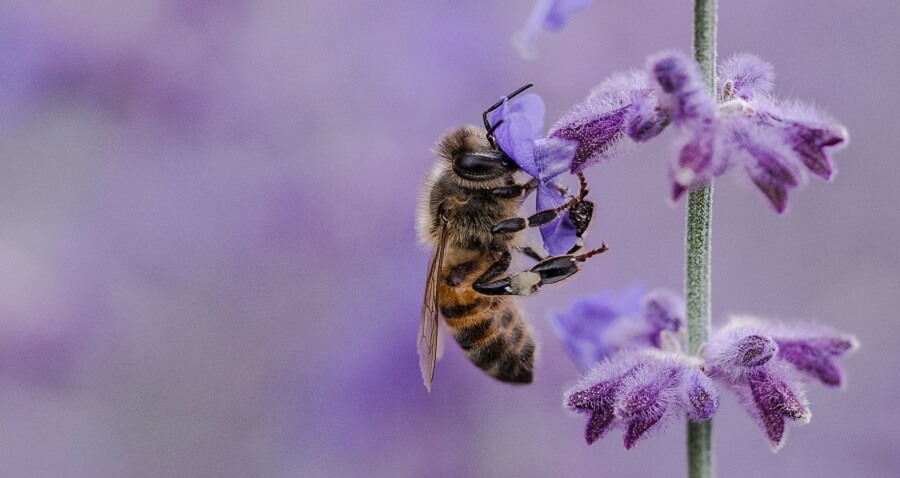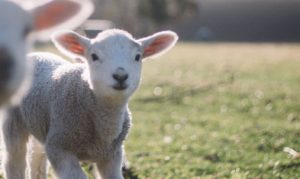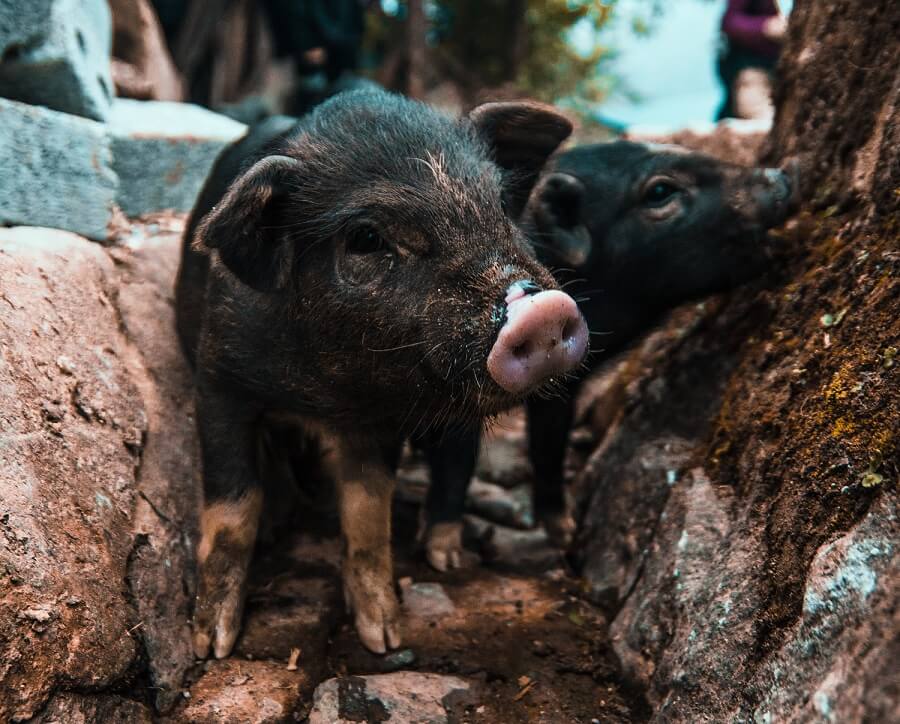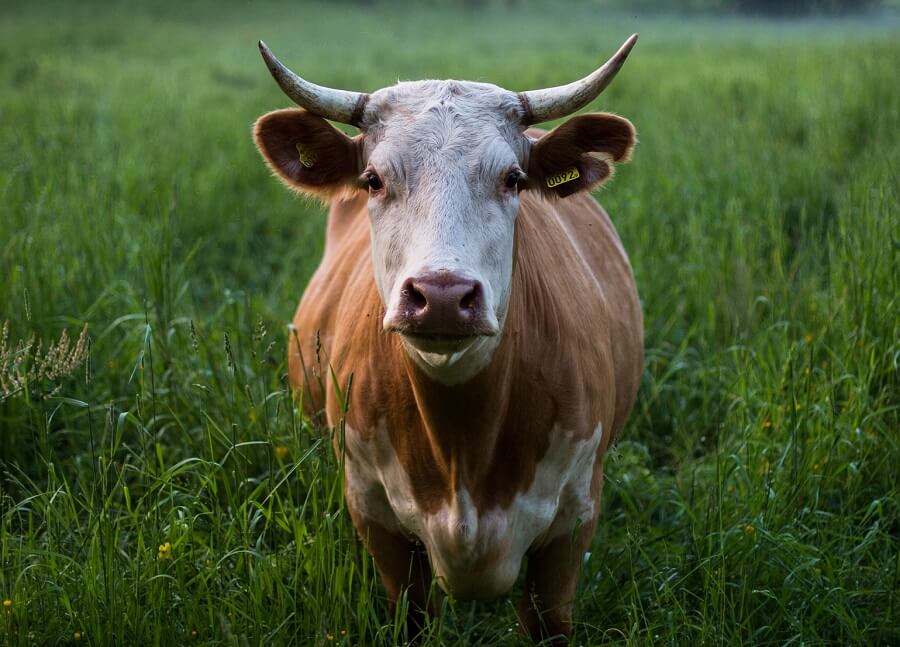Like many of you, I have wanted to achieve greater self-sufficiency. It is hard to become completely self-sufficient without raising certain farm animals. But, What farm animals are the best animals for self-sufficiency?
The answer depends on what needs your family has and what your available resources are. Which animals are better will depend on whether you live in an apartment, a house, and how much land you have. It also depends on whether or not you have a lot of time and desire for the deeper aspects of self-sufficiency, or whether you work full time and must juggle animals after work.
I looked at several questions:
- How much space does each animal need?
- How long does it take for the animal to reproduce?
- Can the animal live off the land or do they need greater care?
- How much time does the animal require?
- What other resources are needed?
- How many needs can the animal fulfill toward self-sufficiency?
I ordered my animals based on
1- the overall usefulness of the animal
2- the ability to raise them in all sorts of environments
3- the most self-sufficient animals which require the least amount of care and external costs
After looking at many types of animals, I found 10 animals that make the greatest difference toward your family becoming self-sufficient. You can also look at them as a progression toward self-sufficiency. Start with the first animal and then, as you work toward greater self-sufficiency, add more animals to your arsenal. If an animal doesn’t fit in your families needs, then skip it an move on.
10 Best Animals For Self-Sufficiency
Even apartment dwellers can raise some animals and achieve a greater sense of self-sufficiency. Let’s take a look at the easiest animals to raise and work forward.
1. Rabbits
Rabbits top the list because they are a very low-cost animal to adopt. In many places, rabbits are often free from those who have rabbits. Rabbits are happy in cages and they can be self-sufficient if left to free range.
In addition, they are very prolific. It takes about 10-12 weeks from birth until a rabbit is ready to harvest. Four rabbits, one buck and 3 does, can usually provide all the meat that a family of four needs in a year. One doe’s litters can provide 80 pounds of meat each year.
Rabbits can provide income if sold for pets. And, they provide strong droppings that are very healthy for gardens. They are a calm, quiet animal and good for kids as pets.
Advantages: Rabbits multiply very quickly and cost very little to maintain.
Disadvantages: Many people have trouble with the idea of eating rabbit meat.
Time to reproduce: Rabbits start reproducing within about 6 months. After that, they can produce a litter as much as 3 times a year.
Cost Considerations: Rabbits cost very little to maintain. Their food costs little and they can even fend for themselves if given space to roam and forage.
Needs: Shelter from predators. Rabbits are prey for many animals and will need some form of protection.
Time: Rabbits need to have their hutches cleaned out regularly. If they are kept in cages, they need to be fed daily.
Food: 5-10 minutes. Rabbits can forage for grains, vegetation, and small rodents. They are also healthy if fed rabbit pellets.
Uses: Meat, pelts, garden fertilizer, pets to sell.
Other: Rabbit meat is difficult to sell for money because of the cheapness of rabbits and the stigma that some people have against it. They won’t make a lot of money for their owners.
2. Chickens
Chickens are another easy animal to raise for self-sufficiency because they require little space and provide much. It is possible to raise a chicken in an apartment, although I don’t think I’d try it myself. Chickens will be happiest left outside, but don’t need a lot of space to be healthy. They basically need a chicken coop, or protective covering, food, and protection from predators.
Chickens provide a variety of things including eggs and meat. They can also provide feathers. If you needed to be completely self-sufficient, feathers provide stuffing, insulation, and craft supplies. Chicken pellets are great for the garden.
In addition, chickens that free-range will help to control your bug population around your yard. That’s because they are excellent foragers and love bugs and seeds. This makes them useful for controlling weeds and grass.
Chicks can be sold to other urban farmers or families. Eggs can also bring in income to your family.
Advantages: Great for even a small backyard. Many varieties lay eggs daily. This is super helpful for most families since eggs are a popular ingredient in cooking.
Disadvantages: Chickens can be loud, especially if you raise a rooster with your chickens.
Time to reproduce: Chickens will reproduce between 16 and 24 weeks. They can be harvested at 5-7 weeks for meat.
Cost Considerations: Chickens cost very little to feed and protect. They need a coop or hen house for protection. If your chickens free-range, then very little food will be needed during the summer months.
Needs: Protection from predators.
Time: 5-10 minutes a day. Time to lock up the chickens at night for protection and time to feed them.
Food: Bugs, grains, fruit, and vegetables. Chickens will forage in vegetation. They will eat small rodents, oats, meat and a variety of table scraps. Chicken pellets can be purchased.
Uses: Meat, eggs, feathers, as chicks to be sold, bug control, garden fertilizer. Free-range eggs sell for a premium.
Other: Chicken eggs are the most widely eaten eggs in the USA. That makes them well-known and liked.
3. Quails
Quails are smaller than chickens and need less room. They can be kept in cages and don’t have to be ranged in your yard. They provide meat, but because they are a much smaller bird, each bird won’t’ sell for as much as a chicken will sell for.
If you do range them in your yard, be aware that they do fly. You will need more care to keep them close. They cannot fly for a long time but can fly as fast as 40 miles an hour when startled. This means that it could be quite bothersome to gather your quail after a scare.
To prevent this, you will need to keep their wings clipped, which takes a little more time and skill that chickens will take.
Quail eggs are smaller, but are rich and loved by many people. They are also often colorful and beautiful.
Advantages: Smaller, can be kept indoors, or in small areas. Eggs are good and birds are quiet.
Disadvantages: Small birds. They don’t produce as much meat. You will need more eggs to substitute for chicken eggs.
Time to reproduce: Quails will start laying eggs a little after 2 months.
Cost Considerations: Very little to set up. They need shelter or cages.
Needs: Shelter from predators, rotation of cages for the health of the birds. Food.
Time: 5-15 minutes a day.
Food: Grains and seed. They will also eat some bugs. Most chicken feed will also be healthy for quail.
Uses: Meat and Eggs.
Other: Quails add variety to your poultry options. If you are trying to be self-sufficient and are eating only the chicken or rabbits you raise, then quail provide more variety and taste to your diet.
4. Ducks
Ducks are a great addition to becoming self-sufficient. Duck eggs are larger than chicken eggs, although ducks don’t lay as often or start as young as chickens do. Duck eggs are considered more of a delicacy so they sell for more than chicken eggs.
Additionally, ducks provide meat, forage for bugs and worms, and provide good pellets for the garden. Plus, ducks are less disease prone than chickens. Ducks will be a little louder than chickens as even the female ducks are louder.
Ducks need to have access to water. A pond or shallow kiddie pool is ideal. Ducks aren’t smart enough to keep from drowning in deep water without a “beach” or way to pull out of the water. They also need a duck house for protection from predators and the elements.
Advantages: Larger eggs than a chicken. Less likely to get diseases. Premium meat.
Disadvantages: Even the females are loud.
Time to reproduce: 6-7 months. Ducks will not lay daily.
Cost Considerations: Ducks need more space than chickens. They need shelter and a pond to stay happy.
Needs: A pond, a shelter, some space.
Time: Ducks need to be locked up at night to stay safe. They may need to be fed daily, depending on how much space they have to forage. They will also need their pond to be cleaned out 1-2 times each week. Some varieties need their wings clipped.
Food: Ducks eat grains, bugs, vegetables, fruits, fish and worms. They can also eat duck feed that can be purchased.
Uses: Meat, eggs, pellets for the garden, bug control.
Other: Duck eggs are often a premium product for bakers to use. If neighbors are close, the noise may become a factor.
5. Tilapia, Catfish, and Rainbow Trout
Each of these fish could be listed individually, but when raised together, you will have greater self-sufficiency. Additionally, how you raise fish will depend on whether you live in colder climates or warmer climates.
Technically, you can raise fish indoors. Apartment raising fish will limit the number of fish that you can raise but will provide some additional self-sufficiency.
If you raise your fish outdoors and you live in a warm climate, then tilapia and catfish will do great. You will be able to keep them year-round with minimal maintenance. Fish can be raised in an aquaponics system, which will keep your water clean and provide you with produce. Or, they can be raised in just water, but the water will need to be cleaned and filtered to stay clean.
Nile Tilapia and catfish can survive in colder climates, but cannot survive below freezing. Therefore, if you keep your fish outside, you will need to either heat the water or switch to cold-water fish during the winter. Rainbow trout are excellent cold-water fish and will survive in colder climates.
Swapping between Tilapia or catfish and rainbow trout will allow you to produce two yields of fish each year. If you keep one type of fish in, you will harvest one yield of fish, but won’t have to switch out your fish.
Advantages: Very little time of knowledge required. Inexpensive. Can be kept in bathtubs and barrels.
Disadvantages: Colder climates will require more care as the weather turns cold.
Time to reproduce: Tilapia take about 34 weeks before they can be harvested. Catfish take between 1-2 years from spawning to grow to a 1lb fish. It will take less time if you buy hatchlings at the beginning of each season because they will be larger.
Cost Considerations: A tank, a filter, and feeding the fish. An aquaponics system will cost more to set up, but will take less time to maintain.
Needs: Clean water, daily food, the right temperature of water.
Time: 5 minutes a day. 1 hour to clean tank each week if not using aquaponics.
Food: Worms, fish pellets.
Uses: Meat, resell
Other: To become even more self-sufficient when raising fish, you can grow worms to feed them. That will eliminate the need to purchase fish food.
6. Honey Bees
Honeybees make the list next because they can be raised in small yards and they produce necessary food for most people: honey. Although honey is not necessary per se, sugar is usually needed. It is impractical for most people to grow and harvest sugar cane or sugar beets and some people don’t like the taste of stevia as a sugar substitute.
Therefore, honey bees become necessary for self-sufficiency. Bees themselves require very little care and will self-care. Harvesting the honey in the spring and early summer requires some time but is usually the only time bees require.
If you plan to split your hives for growth or want to keep your hive from swooning, you will need to invest a little more time into managing your queen bee eggs. You will need some equipment, especially a bee suit, a hive, and processing equipment, depending on the type of hive you purchase. Some hives are built to drain the honey without the more costly process of separating honey from the wax.
Honey can be harvested during the fall, but bees will need to be fed during the winter. Sugar water is not as healthy for them as honey so it can put your bees at a little more risk.
In addition to providing honey, bees do a great service to gardens and fruit trees.
They are necessary to pollinate plants. Without bees, our food supply and the world would look very different. Raising bees contributes to the health of the environment!
Advantages: Bees take very little time and will regulate their own hive temperature, humidity, and food supply.
Disadvantages: Some people are very allergic to bee stings. Don’t consider this if you have a deadly allergy to bee stings.
Time to reproduce: Honey can be harvested while flowers are in full bloom. This means a few times during the spring and early summer in colder climates. It can mean year-round in warmer climates where various flowers always remain in bloom.
Cost Considerations: A beehive, bee suit, and processing equipment.
Needs: Bees need a beehive.
Time: No time except to process honey 2-3 times a year.
Food: If you take honey in the summer or fall, you will need to supplement the bees diet with a sugar water mix so they don’t starve during the winter months.
Uses: Honey and pollination.
Other: Bees are perhaps the most important animal. They are vital to our environment as we currently know it.
7. Goats
Goats are the next animal in line to help you become self-sufficient because they provide milk and meat for consumption. Certain breeds also provide fiber for clothing. Goats are a great way to maintain pastures and a natural way to control weeds.
Goats are fairly self-sufficient if they are given enough space to forage and feed themselves. But, they can also be kept in a small space and in some suburban yards. In this case, they will need to be fed daily. Goats don’t eat anything, but they may chew on most anything.
Goats prefer weeds to grass, vegetation, grains, and hay.
And, although goats are famous for being escape artists, happy goats don’t usually attempt escape.
Goats usually need to be dewormed. They are susceptible to stomach ailments and can often have an issue that causes severe illness or death within hours. This makes a confined goat require a little more care and monitoring than one that has more space and food to forage.
Goat milk is often tolerable to those who can’t digest cow’s milk. It can be made into cheese. Plus goat meat is gaining in popularity in the US and Europe. In other places, it is already very popular meat.
Advantages: Goats adapt well. Provide milk, meat, and fleece. Easy care.
Disadvantages: Can get stomach issues easily. They are escape artists. Will chew on most things.
Time to reproduce: 4-12 months before a doe is old enough to reproduce. The gestation time for a goat is about 150 days. Goats can have 1-2 litters a year and usually have 2 -3 kids.
Cost considerations: Goats will need a secure place and a shelter from the elements. You may also need to purchase food.
Needs: Food, shelter, and confinement. Goats need a place to go for protection from the elements. If your goat is in a smaller space, make sure they have a good fence to keep them in. They will also have to be provided with deworming medicine to keep them healthy.
Time: Milk a goat daily. Feed it daily. Depending on the purpose of your goat it may take 15-25 minutes a day to care for your goat.
Food: Goats eat vegetation, grains, and hay. Don’t feed your goat just anything as that will contribute to stomach ailments.
Uses: Meat, milk, fleece. Milk goat can be made into cheese, yogurt, and soaps.
Other: Goats can be tamed, but have their own personalities. They may understand your comment but will choose not to obey it some of the time.
8. Sheep
Sheep graze well and are docile animals. They are useful to provide meat, wool, and even milk. Sheepmeat is very popular and is more expensive than many other types of meat. The wool can be sold or used for clothing purposes.
Sheep generally need a little more room than a goat can get by with. They don’t have as many stomach issues as goats and they have different nutritional needs.
If you combine sheep with your goats, make sure that each animal gets the right nutrients that it needs for good health. Sheep will also take a little more time than goats. Sheep need to be shared in the spring or they will be very uncomfortable. This will help with birthing.
Sheep are happy grazers and will do best with a shelter from the weather. They are easy prey so you will need to provide some protection from predators.
Advantages: Gentile animals, not as stubborn as goats. Easy grazers.
Disadvantages: Need to be sheared every year. Easy prey.
Time to reproduce: Can reproduce 3 times every 2 years. Sheep can reproduce as early as 8 or 9 months. They take 152 days of gestation to give birth.
Cost considerations: Equipment to sheer the sheep, food, shelter.
Needs: Food, shelter, and an annual sheering. Also deworming.
Time: Daily feeding and annual sheering.
Food: Grains, grass, and hay.
Uses: Meat, lambs, wool, milk. Lambs can be sold for an income.
Other: Lamb is pricy meat that can be sold at a premium.
9. Pigs
Pigs require more care, space, and cost more than the other animals listed. But, they feature one of the most popular meats, bacon, and pork. If you have the room to raise pigs, they can grow to many hundreds of pounds and produce a lot of meat for your family.
Pigs are clean animals if given the space. They will keep their waste and food separate. Pigs need shelter from the elements, plenty of food, and a fence to keep them from wandering.
Pigs eat meat and vegetables. They will root for food and will even eat some insects.
Because hogs can become quite large, they do require more knowledge and time to care to raise. You will need more equipment to transport a fully-grown hot to the butcher or to sell. You will need to feed it more food, and it is harder to man-handle when fully grown.
Pigs will eat almost anything and make great natural garbage disposal. They also need access to water and mud to keep cool in the summer.
Advantages: Pigs will eat almost anything. They can be fed any food that is going to spoil. They will eat meat and produce alike, as well as table scraps.
Disadvantages: Grow to a very large size and can be more difficult to handle. Need enough food. Pigs need between 6-8 pounds of food to eat a day.
Time to reproduce: Pigs take until 5 or 6 months before they are ready to breed. They take just under 4 months, or 3 months, 3 weeks to gestate. Pigs will have about 5-25 piglets in a litter, depending on the breed and other conditions.
Cost considerations: Pigs will need enough food to grow and be healthy. They will need shelter and a good fence. You will also need a way to transport your pigs if you are planning to sell them or have them butchered by someone else.
Needs: Food and shelter.
Time: 10-15 minutes to feed them daily.
Food: Any scraps from the table, garden, other animal feed.
Uses: Meat. Pork and bacon are both popular and easy to sell.
Other: Pigs can get mastitis after having piglets and may need to be monitored.
10. Cows
Cows are generally gentle animals. They are larger and will need more land than the other animals listed. Cows need 2-3 acres to graze per cow. If you have them in a smaller area, they will need to be fed hay and other feed.
During the birthing season, cows will need shelter to birth the calves for the best outcome and health of the calves.
Cows don’t take a lot of time on a daily basis but do often need help with birthing. They will need to be fed daily if they aren’t grazing. Additionally, if you raise a milk cow, it will need to be milked twice a day at regular schedules. This can tie you to your cow and prevent many adjustments in your schedule.
Cows are very large and can be difficult to handle. They can also be stubborn.
They can have mastitis after birthing, mineral deficiencies when calving, and some foot issues.
Advantages: Provides a lot of meat or milk. Requires little daily care.
Disadvantages: A very large animal. Can be difficult to control.
Time to reproduce: Cows will generally birth once a year.
Cost considerations: You will either need several acres per cow to graze them or will need to provide hay daily. Cows will eat about 24 pounds of hay each day.
Needs: Food, shelter, a strong fence.
Time: Help with birthing, Milking twice a day if you have a milk cow, Daily food.
Food: Hay, Grass, Grains, and Corn.
Uses: Milk or Meat
Other: Beef is popular and easy to sell. Milk is also popular.
You might also check out this article on whether pigs or cows are more profitable.
Conclusion
The animals I’ve listed aren’t all-inclusive. I left off several animals that deserve an honorable mention. Worms can be raised to increase your self-sufficiency when raising various types of poultry or fish. They provide great protein to these animals. They can also be raised to increase the composting of your compost pile, and to increase the health of your soil.
Alpacas are great farm animals and can provide protection to many of your animals as a guard animal. Alpacas can pack weight, provide wool, and in some cases, milk. Because they aren’t used as much as a food source, we left them off our list. They qualify as a second-level animal that helps with self-sufficiency.
b are popular farm animals and are used for transportation. However, few people consume horses so their main purpose is to ride. This makes them less-helpful for those seeking greater self-reliance and independence (unless you consider the price of gas).
Dogs are also popular on the farm. They make a good guard animal and a great companion. However, they do less to help with self-sufficiency than the animals I named above.
What animals do you think I should have included but didn’t?
Related Articles
You might also find these articles helpful:
15 Best Dual Purpose Chickens That Lay Well And Fatten Nicely
8 Kid-Friendly Farm Animals That Make The Best Pets
How To Raise Rabbits: The Complete Guide
